Ramses II’s coffin and another 181 artefacts are currently on display for the first time in Australia in the interactive exhibition ‘Ramses & the Gold of the Pharaohs’.
The exhibition is being held at the Australian Museum in Sydney from 18 November 2023 to 19 May 2024. It is on its fourth stop after showing in Houston and San Francisco in the US and Paris.
“I think this exhibition will inspire people to visit Egypt to see the iconic pyramids and tombs for themselves as well as visit the huge range of museums across Egypt,” Australian Museum Director and CEO Kim McKay told The Egyptian Gazette.
“The new Grand Egyptian Museum or GEM opens in early 2024 and sets a new standard in showcasing the treasures of ancient Egypt,” she added.
People are excited, amazed and immediately want to know where they can buy a ticket, she said.
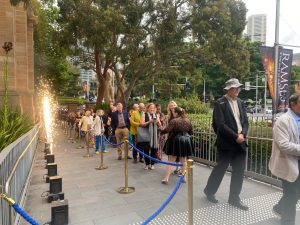
“Ancient Egypt is captivating and the public are already flocking to buy tickets – at the time of opening I believe we would have sold over 100,000 tickets in advance! That’s an incredible result and is reflective of the fascination people have for the Pharaohs, their Queens and the sophistication of ancient Egyptian culture.”
Ramses II (1279-1213 BC) was the third ruler of the Nineteenth Dynasty. He is considered one of the greatest warrior pharaohs in the era of the New Kingdom. He ruled Egypt for 66 years, and was an important military leader known for his extensive building and colossal statues of him found all over Egypt.
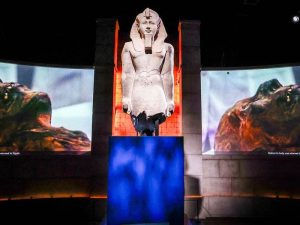
The coffin has great status as it was discovered in the cache of Deir el-Bahari in 1881. It is made of cedar wood and painted yellow. It represents the king in human form with his hands crossed, holding the insignia of government, a sceptre and a whip, and he has a braided false beard.
Ramses had several great royal wives including Nefertari, famous for her tomb in the Valley of the Queens. He was a father of over 100 children.
During the exhibition’s inauguration ceremony, Egypt’s Supreme Council of Antiquities Secretary General Dr Mostafa Waziry described the way the exhibition’s displayed holdings as distinguished, enabling visitors to enjoy viewing all the exhibits, especially the coffin of King Ramses II, which is of great importance among all the exhibition’s holdings.
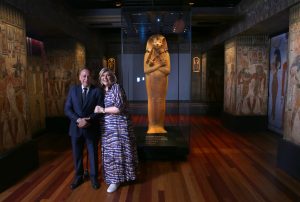
He also praised the way of promoting the exhibition, the streets, shops and schools were filled with advertisements for the exhibition.
Waziry said that this promotion is important because it will encourage all residents of the city of Sydney and its visitors from inside and outside Australia to visit the exhibition.
McKay said that it is the first time the Australian Museum has ever hosted a touring exhibition from Egypt.
She added that the exhibition takes visitors on an exciting journey with the life and times of Ramses II as the main focus.
“The priceless artefacts and objects illustrate the key features of his reign, known as the Ramesside period. The exhibits also touch on Ramses’s family, ancestors and successors together with his incomparable monumental building policy and his legacy,” McKay said.
On display are artefacts and ornate golden treasures, including one-of-a-kind relics such as sarcophagi, animal mummies, magnificent jewellery, spectacular royal masks, exquisite amulets – many of which have never left Egypt before.
“The artefacts on display are all objects found in excavations across Egypt from Nubia to the Delta, including Abu Simbel, Aswan, Thebes, Memphis, Dahshur, Saqqara, and Tanis.”
The exhibition is presented in partnership with World Heritage Exhibitions, Neon and the Houston Museum of Natural Science, with support by Egypt’s Ministry of Tourism and Antiquities, and also funding from the NSW Government’s Create NSW Blockbusters Funding initiative.
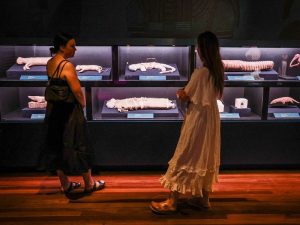

“At the moment there is not a dedicated Egyptian gallery inside the museum. However, there is a case in the Westpac Long Gallery featuring one of the two mummies held by the museum in its collection as well as other artefacts. There is also a recently restored cartonnage mask on display on Level 3 of the Australian Museum,” she said.
“We do, however, have long term plans for a new World Cultures gallery and a dedicated Egyptian Gallery.”
The Australian Museum was established in 1827 and was the first in Australia. It houses an irreplaceable collection of international standing: over 22 million objects representing a timeline of the environmental and cultural histories of the Australian and Pacific regions.
McKay has been its director since 2014. She is the first woman to hold the position in the museum’s history.
She has worked in the US in senior roles in non-fiction television for Discovery Channel and National Geographic and co-founded the iconic Clean Up Australia and Clean Up the World campaigns in the 1990’s working in conjunction with the United Nations Environment Programme (UNEP).
The co-author of five True Green books published in Australia and internationally by Nat Geo, McKay has received many awards for her environmental and citizen science work.
She is on the advisory board of the One Million Women campaign and, in 2011, was named in the Australian Financial Review’s 100 Women of Influence list, and was included in the book ‘The Power of 100…One Hundred Women who have Shaped Australia.’ In 2013 she received Australian Geographic’s Lifetime Conservation Award.
McKay has visited Egypt many times; the first when she was five years old.
“The Suez Canal was still open and my family was moving from Sydney to London for my dad’s job. We travelled by ship in those days and stopped in Cairo. I remember that first visit in vivid detail. Whether it was the pyramids or the Cairo Museum or the souk and tents where crafts were being sold, I remember being entranced by the stories, sights and smells of the sweet perfumes. It was magical.
“Years later when I was working for National Geographic in the United States in the early 2000’s, I made many visits to Egypt working on documentaries and hosting media visits.
“This is where I came to know Dr Zahi Hawass well — he was a National Geographic Explorer in Residence and was a fantastic communicator telling the stories of ancient Egypt,” she said.
“It is one of my favourite places in the world to visit.”



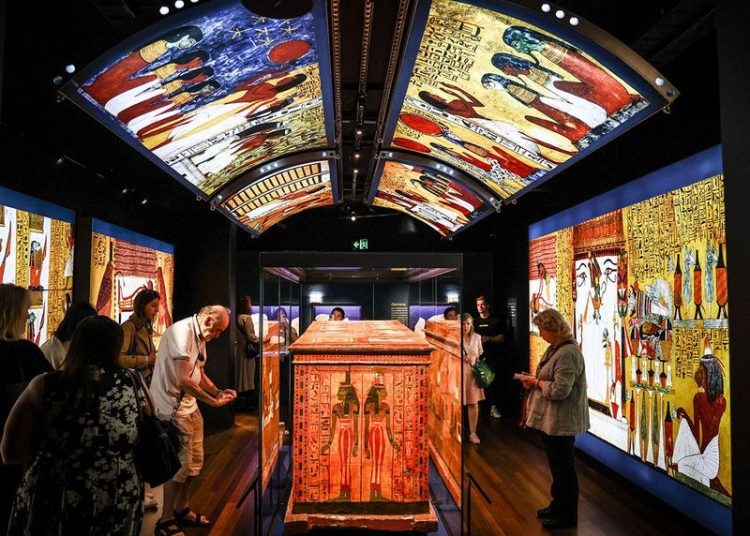


Discussion about this post